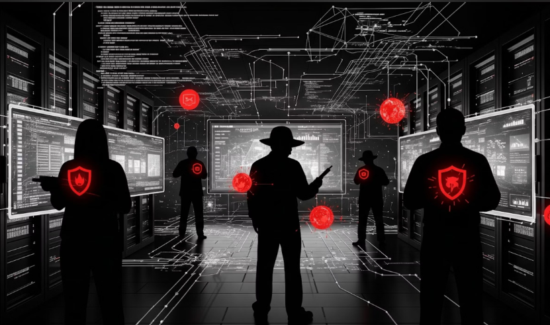Industry 4.0’s IoT Revolution: Ensuring Security in Critical Infrastructure


Sequretek’s Anand Nalk offers insights on the industry 4.0 revolution and ensuring security in critical infrastructure. This article originally appeared on Solutions Review’s Insight Jam, an enterprise IT community enabling the human conversation on AI.
Insecure network devices, unpatched systems, and outdated components become gateways for malicious actors. Imagine a scenario where a compromised pacemaker in a hospital leaks sensitive patient data, potentially jeopardizing lives. Or consider a manufacturing plant experiencing a complete production shutdown due to a cyberattack disrupting assembly lines. These are not mere hypotheticals; they represent the harsh realities of unsecured IoT systems.
By 2030, the global potential value of IoT will amount to USD 12.5 trillion, reports McKinsey. The widespread adoption, however, comes with its own risks.
In the latest wave of cyberattacks targeting critical infrastructure, Germany-based PSI Software, a key player in the software and logistics platforms industry, faced significant operational disruptions following a ransomware attack detected this February. The incident led PSI to shut down all external connections and systems to safeguard its operations. The attack highlights that the critical infrastructure and every linked provider and stakeholder in the network is vulnerable the escalating threats, posing long-term risks.
Understanding Vulnerabilities of IoT Systems
Several threats lurk in the shadows of these vulnerable environments. Man-in-the-middle attacks allow attackers to intercept and manipulate data transmissions between devices, potentially stealing sensitive information. Distributed Denial-of-Service (DDoS) attacks overwhelm networks with a flood of traffic, rendering them unusable and disrupting critical operations. IoT botnets, consisting of large networks of compromised devices, can be used to launch even larger-scale attacks or engage in malicious activities like data exfiltration.
Shadow IoT devices, those connected to a network without proper authorization or documentation, introduce further risk. Eavesdropping, intercepting data on the network or directly from the device itself, can compromise sensitive information. Ransomware, a particularly insidious threat, encrypts critical data and demands payment for its release, potentially crippling operations and causing significant financial losses.
The potential consequences of these vulnerabilities and threats are vast, highlighting the urgent need for robust security measures in the era of IoT integration. Organizations can ensure the safety and resilience of our interconnected world by implementing a multi-pronged approach that combines secure network architectures, advanced threat detection technologies, and ongoing vigilance.
Securing IoT Devices
The National Institute of Standards and Technology (NIST) lays out a three-pronged approach to securing IoT – protecting device security, data security, and individual privacy. To address these concerns, secure architecture considerations are paramount when designing an IoT environment. Isolated or segmented network deployments can create “air-gapped” environments for critical devices, severing their connection from traditional IT networks and preventing attackers from gaining unauthorized access. Strong authentication is crucial to eliminate weak or hardcoded passwords, and implementing robust authentication mechanisms are essential. Strengthening access controls for default settings also helps prevent unauthorized modifications.
Designing the architecture with ecosystem interfaces, update and patch mechanisms, and device management aspects in mind allows for ongoing security maintenance and reduces vulnerabilities. Secure data transfer and storage mechanisms, such as encryption, ensure that intercepted data remains unreadable. Physical hardening of critical devices safeguards them from tampering and physical attacks. Finally, secure software coding practices for all software on IoT devices, including firmware and real-time operating systems, are vital to minimizing vulnerabilities. Organizations can create a secure foundation for their IoT deployments by implementing these comprehensive architectural considerations.
Leveraging Emerging Technologies for IoT Security
Artificial intelligence (AI) and machine learning (ML) are revolutionizing IoT security by providing advanced, proactive measures against cyber threats. AI-driven analytics process vast amounts of data and logs from IoT devices, enabling real-time detection and response to threats such as DDoS attacks, data exfiltration, and ransomware. These AI systems identify anomalies in access patterns, usage, and data exchange, and detect unauthorized access and misuse.
Machine learning further enhances IoT security by classifying IoT assets, applying risk policies, and detecting anomalies in usage patterns and software behavior. Blockchain technology also plays a crucial role by providing secure data exchange mechanisms. It creates an immutable record of all transactions involving IoT devices, which makes it extremely difficult for attackers to alter data. It ensures data integrity and authenticity, adding a layer of security to IoT deployments.
Embracing Best Practices
To complement these technologies, encryption is essential for protecting data in transit and at rest, ensuring that the data remains unreadable to unauthorized parties even if intercepted. Regular security patches and updates are necessary to address vulnerabilities and reduce the risk of exploitation. Protecting critical IoT devices from tampering and physical attacks by securing enclosures and implementing tamper-evident measures is crucial. Secure coding practices for all software running on IoT devices, including firmware and applications, help minimize vulnerabilities from the ground up.
Following best practices for designing secure IoT architectures, which also includes integrating IoT security into broader IT security strategies, is essential. Fast asset discovery, network segmentation, enabling device authentication, and incorporating IoT device access into overall access governance strategies, including Zero Trust models, are practical steps to fortify IoT security. Security Information and Event Management (SIEM) and Security Orchestration, Automation, and Response (SOAR) can provide a unified platform to monitor and manage security across IT and IoT environments.
As the adoption of IoT technologies continues to grow, securing these devices will be paramount to ensuring the safety and resilience of critical infrastructure sectors. The need of the hour are standards for the industry to manage cybersecurity risks effectively. In the US federal agencies, which oversee the security of critical infrastructure sectors, have measured the adoption of IoT and OT (Operational Technology) cybersecurity standards in sectors like energy, healthcare, and transportation.
Through proactive measures and the integration of advanced technologies, organizations can navigate the complexities of IoT security and protect their critical infrastructure from evolving cyber threats.



















